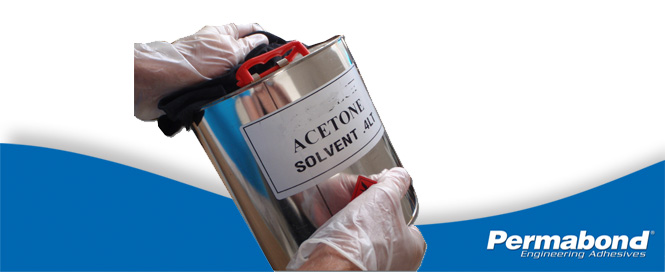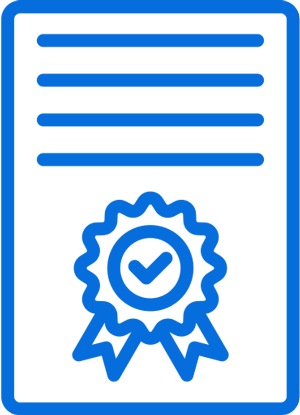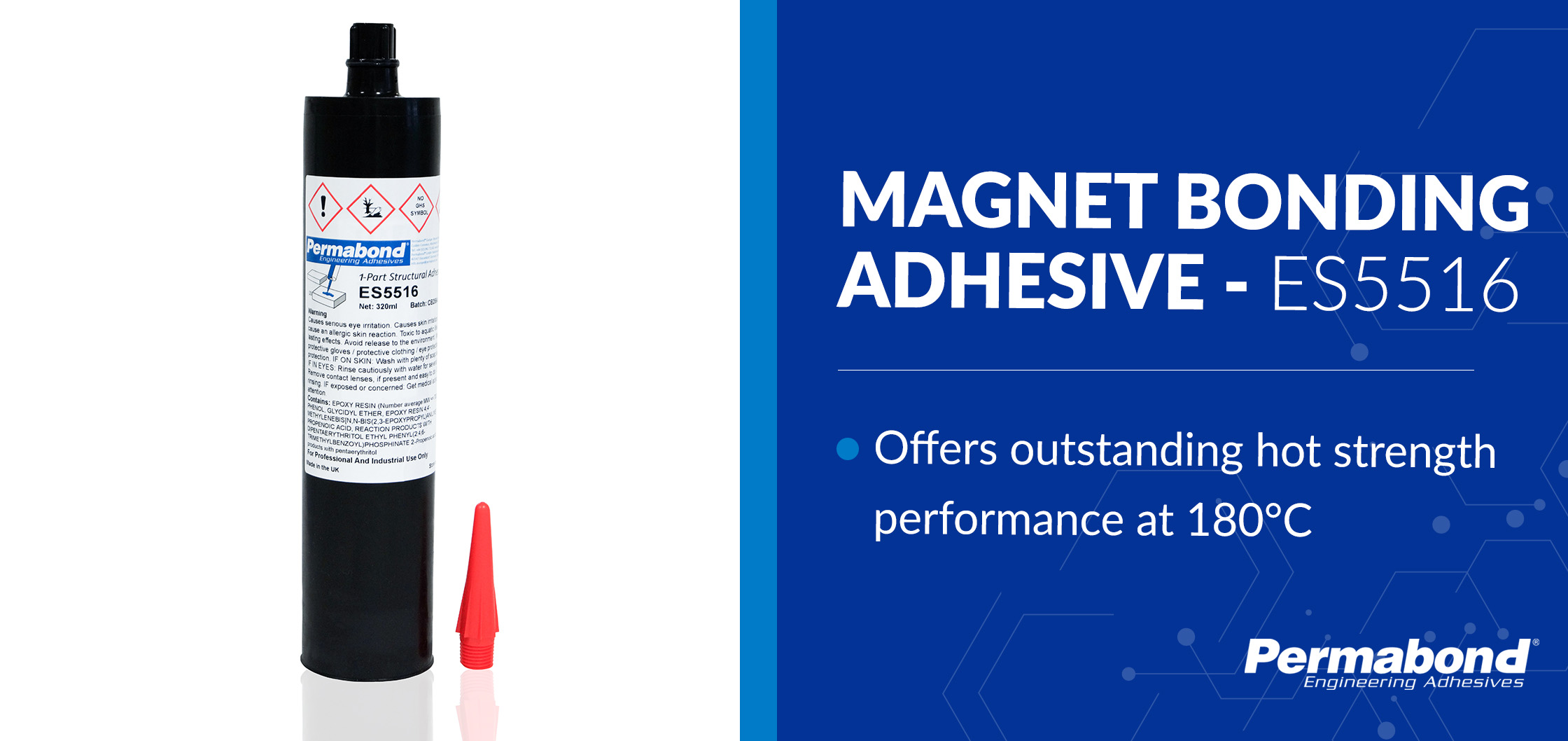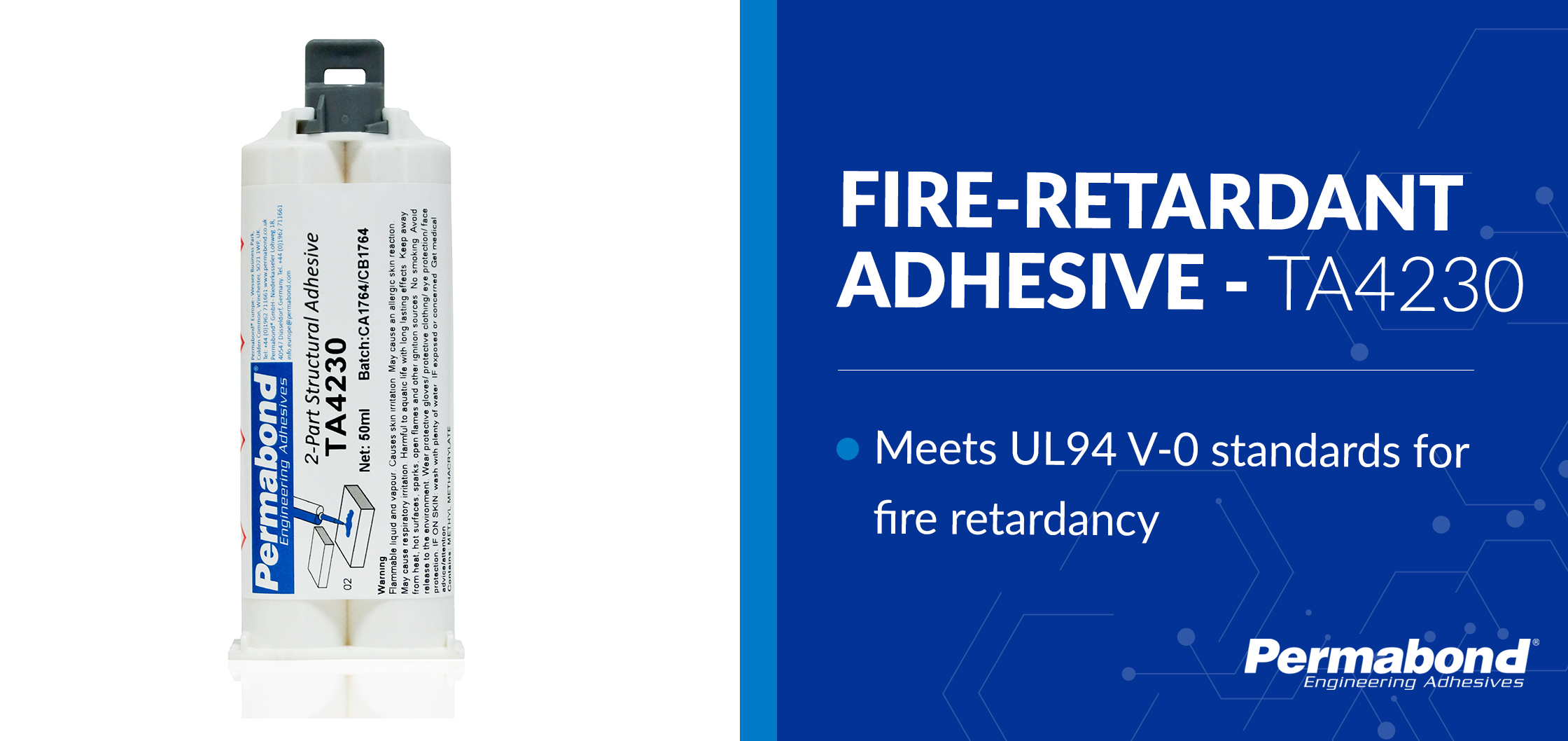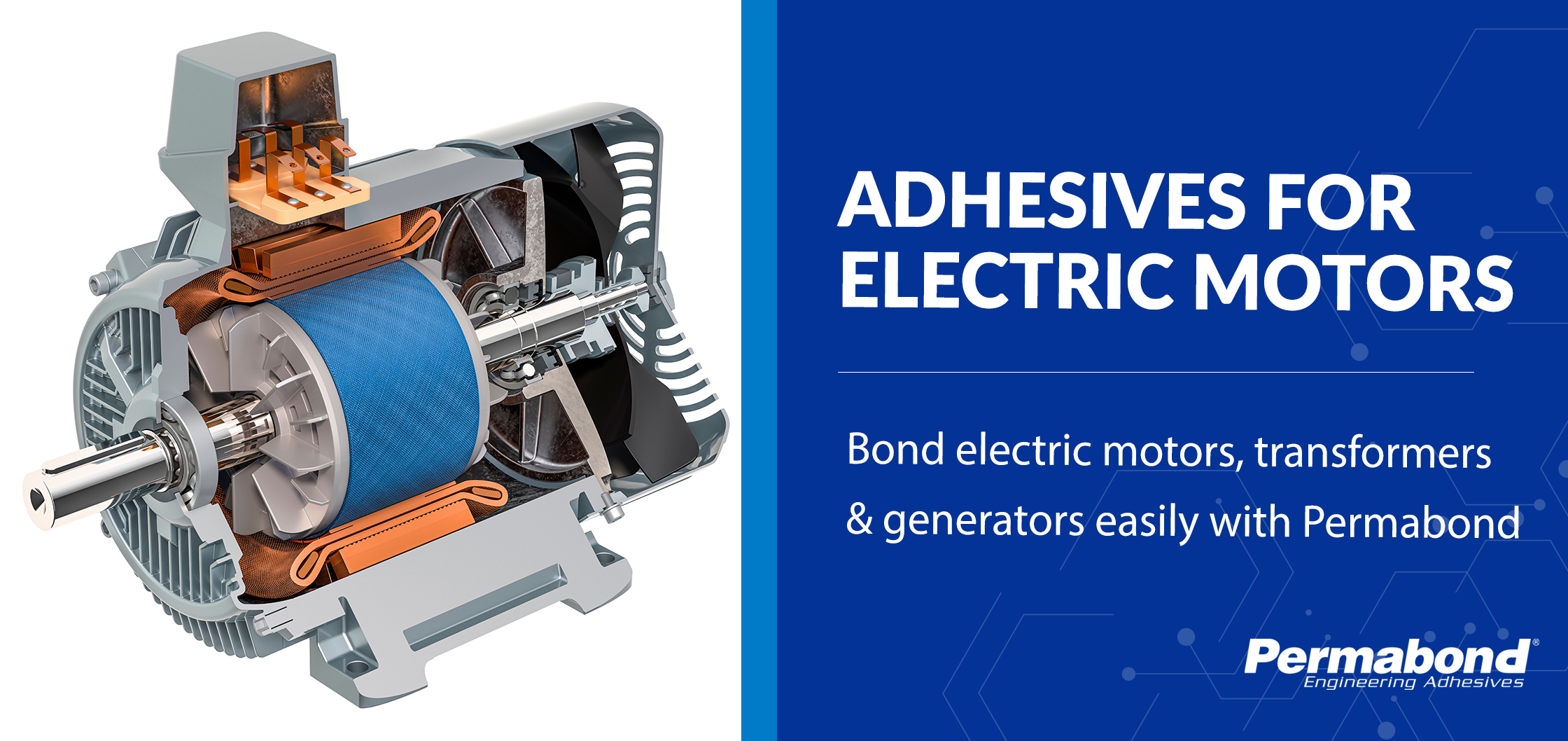How to Remove Adhesive
Industrial adhesives are usually designed to offer the strongest bond and the best environmental resistance possible. Determining the best way to remove cured adhesive can be a monumental challenge! In every case, it is important to consult the relevant safety data sheet for both the adhesive and cleaning agent to ensure adequate personal protection (gloves, safety glasses, and face masks). Also, for sensitive substrate materials such as certain plastics, we recommend checking a small, discreet area for compatibility before applying chemicals.
When using any adhesive, it is a good idea to refer to the safety data sheet for appropriate personal protection, spill information, and proper disposal of uncured adhesive. This information can assist in preparing an appropriate spill kit, which should be readily available.
Anaerobic Adhesives
Cleaning up a spillage
Soak up large spills with sand or other inert absorbent material like paper towels. Make sure to bag and dispose of it safely.
Cleaning up a residue
OK, so you’ve got rid of the puddle, but now a greasy patch remains… what do you do? You can clean up with MEK or IPA solvent and a clean cloth or paper towel. Make sure to ventilate well / wear a mask, avoid solvent inhalation. Dispose of the cleaning cloths safely.
Cleaning up excess on parts
Use activators such as Permabond A905 or ASC10 to cure edges of bonds to help prevent tackiness and to give a little extra protection against solvent attack. Excess anaerobic inside pipework systems is not visible – it is important to flush through any system to wash excess adhesive away (a water flush is adequate, no need to flush through with solvent). Anaerobic adhesive that has been flushed away will not “set” somewhere else and cause a blockage. In order to cure, anaerobic adhesive must be confined between two metal surfaces or sprayed with activator (A905 or ASC10) to cure.
If the outside parts are still messy and the appearance is not up to scratch, clean them with MEK or IPA and a clean rag or paper towel. Be careful to cure parts sufficiently before handling them. Otherwise, you could interrupt the cure and suffer inferior bond strength or a leaky joint.
Removal of cured adhesive
Removing cured adhesive is a bit more difficult; MEK and IPA are not particularly aggressive. Use acetone if necessary. If these fail, you can try methylene chloride, but be very cautious about this coming into contact with cured adhesive in the joint, which you don’t want to destroy!
When trying to free a bolt threadlocked with a permanent threadlocker heat the parts to above 200-250 deg C then use normal tools to break them free.
When disassembling threaded pipes with pipe sealants use a metal brush to thoroughly remove adhesive (pipe sealant) before reapplying. Similarly, when removing form in place gaskets, it is better to scrape the gasket than try to dissolve it. There are very soft, flexible adhesive grades available for making gaskets that can be easily removed.
Cyanoacrylate Adhesives
Cleaning up a spillage
For a large spill, flood the area with water. This causes the adhesive to polymerize; you can then use a scraper to remove cured adhesive. For smaller amounts, mop up with paper towels (place in bowl of water afterward to polymerize all the adhesive soaked in it). Be careful – large amounts of cyanoacrylate soaked into cotton-based materials can ignite! Dispose of polymerized material safely.
Cleaning up white powdery residue or cured cyanoacrylate
Permabond offers CA Solvent 2 which is based on organic esters and non-flammable. It is less aggressive than nitromethane or acetone, but is easier to handle in terms of transportation and materials handling.
Cleaning up excess on parts
Surface activators such as Permabond CSA, CSA-NF, and QFS16 will help cure off excess liquid adhesive. The CSA-NF is particularly useful for minimizing blooming or reducing visible residue. Using a water-dampened cloth is not recommended for cleaning excess off parts, you may end up with a crusty white mess. Isopropanol and a paper towel can be used to wipe off and clean parts where liquid cyanoacrylate needs to be removed.
Removing cyanoacrylate superglue from skin
Because cyanoacrylates are often used on tiny parts which are too hard to handle when wearing gloves, people often bond their fingers by accident. Usually, the forefinger is bonded to the thumb. Remedy this by soaking in warm soapy water and gently roll a pencil between the fingers to peel them apart. Cyanoacrylates are weakest in peel so they will come apart most easily this way. Don’t make the mistake of attacking the bond with nail polish remover – acetone contact can take all the moisture and natural oils away and leave skin dry, raw, and irritated.
Removing cyanoacrylate superglue from clothing
As warm soapy water is pretty good at breaking down cyanoacrylate. This is probably the safest method to remove adhesive without damaging clothes further.
Epoxy Glues
Dealing with an epoxy spillage
Make sure you follow PPE instructions as per the safety data sheet. It is easiest to use a paint scraper, large spatula, or a dustpan to remove bulk epoxy from the floor or work bench. Tip the waste into a suitable container labeled for proper hazardous materials disposal. Clean up the residue with Isopanol or MEK.
If the spill is a single component heat cure epoxy, the good news is, it won’t cure – unless you’ve spilled it in a hot oven. Similarly, if you’ve only spilled the part A or part B of a 2-part epoxy, there is no need to hurry. However, if a two component epoxy has been mixed, you’ll want to clean it up before it sets. If the spill is large, use caution as large amounts of epoxy curing can create an exotherm. Ventilation may be needed.
Cleaning up uncured epoxy adhesive
If you have joined parts together, make sure they are firmly clamped so that they are not disturbed during the curing process. Use a cloth or paper towel with Isopropanol or MEK to remove uncured adhesive. Excess single-part epoxy is easier to remove in its uncured state – after it has been through an oven, it is extremely tough and hard to remove. Spend some time to make sure clean-up is perfect whilst the adhesive is still uncured. Although this can be tedious, it is well worth it in the long run!
Cleaning up cured epoxy glue
Epoxy adhesive is very tough once cured, and not a lot can shift it – a hammer and chisel?! A small cured layer may be able to be removed with acetone. Paint stripper or methylene chloride is most effective. Be careful it does not interfere with an adhesive bond which needs to remain. Beware – acetone, paint stripper and methylene chloride also do a good job of dissolving plastic substrates.
Structural acrylic adhesive
Dealing with a large spillage
Make sure to wear appropriate PPE.
There are various types of structural acrylics. Some, like MMAs, can be very smelly, so ventilate the area well. Mix spilled material with sand or some other inert substance and transfer to properly labeled disposal containers. Clean up any remaining adhesive with IPA or MEK.
Cleaning up excess uncured adhesive
If using a resin and separate initiator system, it is probably best to allow the joint to achieve handling strength before commencing the clean-up. Structural acrylics are very sensitive to joint disturbances and their cure and strength development can be inhibited.
Use isopropanol or MEK to remove uncured adhesive excess. In order to not harm the joint, dampen a paper towel with the solvent and then wipe the joint rather than showering the bond with solvent.
Two part systems are quite satisfying to clean off. Before they are fully cured, take the edge of a metal spatula and remove the soft excess outside of the joint. You can clean further with a paper towel and IPA / MEK if necessary.
Cleaning up cured adhesive
Cured acrylic adhesive is much harder to remove and may require harsher solvents such as acetone or even methylene chloride.
UV Curable adhesive
Dealing with a large spillage
Similar to other adhesive spillages, don the appropriate attire, ventilate the area, and soak up with a spill kit, sand, or inert absorbent material. Dispose of carefully in suitable, labeled containers. Be careful with UV adhesive – exposure to light will make it cure! Industrial lighting or light coming through windows may cause some grades of UV adhesive to cure, so dim the lights and clean up ASAP.
Cleaning up excess uncured adhesive
Solvent such as IPA or MEK work well. If the joint isn’t fully cured, treat the parts carefully – if the joint parts open you could end up with a “crazy paving” effect. If the adhesive has dried, you will need to use a stronger solvent such as acetone or even methylene chloride. It is a good idea to try to remove adhesive squeezed outside the bond area before exposing to UV light. There are slower cure adhesives (such as Permabond UV612) which allow a longer clean up time with the adhesive part-cured as an easy to slice off gel. Then cure the joint completely with a second UV exposure after the cleaning.
General tips
Again, refer to the safety data sheet for information specific to the adhesive you are using. You may consider the guidelines provided here for other types of adhesive such as MS-Polymers, hybrid products, and polyurethanes, but of course, refer to the appropriate safety datasheet.
In every case, removing adhesive outside of the joint (such as the meniscus or “fillet”) can be slightly detrimental to the bond strength and long term durability. It does help to protect the joint against moisture ingress and helps prevent crack propagation from peel stresses. So if the appearance allows, leave and cure the excess.
Permabond offers a solvent cleaner. Permabond Cleaner A, which is effective for cleaning uncured adhesive and is compatible with most surfaces. Always make sure to double check on a discreet area first!
For further help and advice, please contact Permabond.
Categories
Let’s Discuss Your Project.
"*" indicates required fields
Products
Technical Support

Permabond will help you select the right adhesive for your application.

